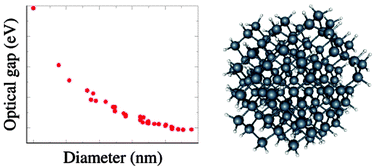Computational studies of semiconductor quantum dots
Abstract
Light-absorption and luminescence processes in nano-sized materials can be modelled either by using computational approaches developed for quantum chemical calculations or by applying computational methods in the effective mass approximation (EMA) originally intended for solid-state theory studies. An overview of the theory and implementation of an ab initio correlation EMA method for studies of luminescence properties of embedded semiconductor


 Please wait while we load your content...
Please wait while we load your content...